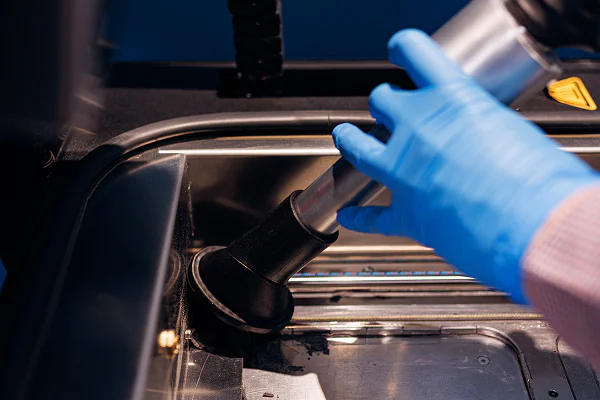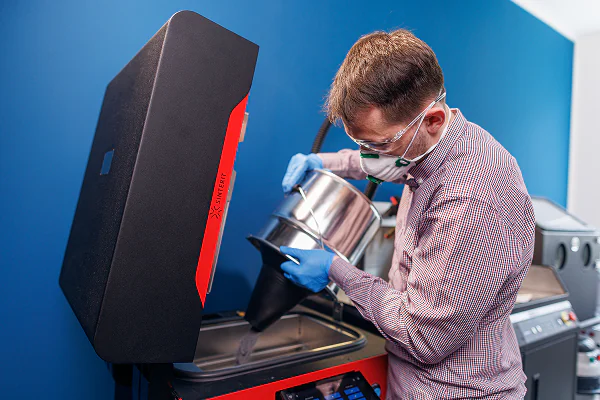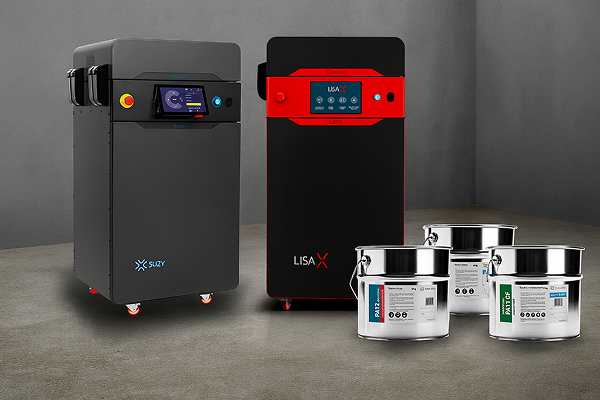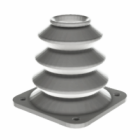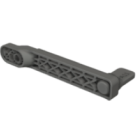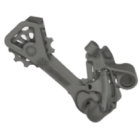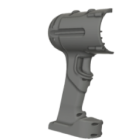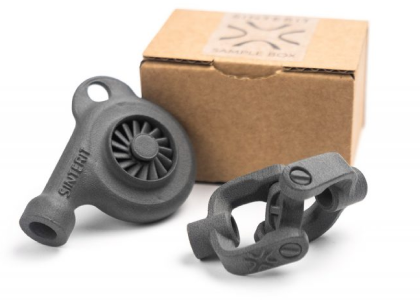SLS compact 3D printer in production: small footprint, big potential
SLS 3D printing has long been admired for its ability to produce strong, functional parts, but for many, it once felt out of reach due to the size, cost, and complexity of traditional industrial systems. Today, that barrier has been broken. With the advent of compact 3D printers, this technology is now accessible directly within the workspace. What was once limited to prototyping is now unlocking real potential for efficient, small-scale production. In this article, we’ll explore how compact SLS systems are transforming workflows and assess whether they can support production goals.
Benefits of SLS compact 3D printing vs. FDM and SLA
Unlike FDM or SLA, SLS compact 3D printer does not require support structures, allowing for complex geometries and efficient nesting of parts within the build chamber. This leads to higher throughput and better material utilization. SLS also offers excellent mechanical properties – parts are strong, wear-resistant, and chemically stable. Materials like PA12, PA11, or flexible TPUs enable everything from housings to living hinges to snap-fit enclosures. The resulting components are often robust enough for end-use applications without requiring tooling or molds. It’s a safe step before investments requiring much higher entry costs.
What makes a 3D printer truly compact and production-ready?
SLS Compact 3D printers combine industrial-level print quality with a smaller footprint and lower operating cost. These systems typically fit on a benchtop or mobile cart and offer build volumes ranging from 100 to 300 mm in any axis, sufficient for hundreds of small parts per week. Many feature enclosed laser systems, user-friendly interfaces, and integrated software that simplifies print setup and powder management. They bridge the gap between expensive industrial SLS and limited desktop FDM or SLA printers.
Real-world use cases of SLS compact 3D printers
Let’s answer some cases related to the usage of SLS, based on a particular situation. We’re going to use some imagination here – so let’s picture a few scenarios and walk through how SLS would be applied to them.
Bridge production: printing real parts before tooling is ready
Imagine this moment at your company: After months of prototyping, your team finally lands on a design that clicks – the product is ready for market. Excitement is high, the investors are onboard, and marketing is gearing up. But then comes the reality check: the injection molding tooling will take 8 to 12 weeks to manufacture. That’s nearly three months of sitting still – no product to ship, no revenue, and no feedback from real users.
Now, picture a different scenario. Instead of waiting, your team loads up a SLS compact 3D printer and begins producing functional, end-use parts in-house the very next day. You’re able to ship early batches to beta testers, gather feedback, and even fine-tune the design – all while the molds are still being made. You stay on schedule, keep your audience engaged, and go into mass production with confidence that your design works in the real world.
This is the power of bridge production with SLS. It fills the costly gap between prototype and scale, letting you move fast without sacrificing quality. For startups and agile product teams, it can mean the difference between launching with momentum or losing it altogether.
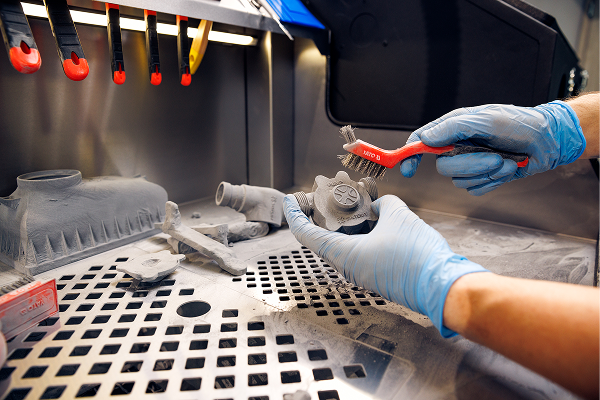
Mass customization with compact 3D printers in medical and wearable sectors
Now, imagine a different scenario: You’re part of a small medical device company specializing in custom-fit orthotic insoles. Every patient is unique – their foot shape, weight distribution, and even the way they walk. Traditionally, creating a personalized product for each individual meant slow turnaround times, expensive molds, and limited scalability. You’ve likely had to tell clients they’ll wait weeks for their device, all while costs continue to rise.
Now, picture this: a SLS compact 3D printer running quietly in your workshop, producing a batch of custom insoles overnight – each one uniquely shaped to a specific patient, based on their 3D scan. There’s no need for tooling, no back-and-forth with external manufacturers, and no compromise on material strength or comfort. Just highly accurate, repeatable results – fast.
This is exactly why industries like healthcare, wearables, and prosthetics are turning to SLS for mass customization. It’s not just about printing parts – it’s about delivering personalized solutions at scale, with the flexibility to adapt on the fly. The result? Happier patients, faster service, and a competitive edge that used to be reserved for much larger operations.
Why compact 3D printers are ideal for low-volume, precision manufacturing
Picture this: You’re part of an engineering team working on a new line of rugged handheld devices. You don’t need thousands of units – just a few dozen precision-fit casings to test in the field and send to early partners. You reach out to a traditional manufacturer, and they quote a high price, not because the part is complex, but because you’re ordering so few. Add weeks of lead time, and suddenly your low-volume needs become a high-friction bottleneck.
Now, imagine having an SLS printer in your workspace. Within days, you’re printing fully functional housings – tough, detailed, and exactly to spec. No tooling. No minimum order. You tweak the design mid-run based on tester feedback and reprint the next iteration overnight. Instead of delaying your schedule, you’re accelerating development and keeping costs under control.
This is exactly where SLS 3D printers proves its value in low-volume production. When traditional methods are too slow or expensive, and agility is your biggest competitive advantage.
Producing spare and replacement parts on demand with a compact 3D printer
Now imagine this situation: You’re running a small manufacturing line, and one morning, a key component in your conveyor system fails. You reach out to the supplier, only to find the part is no longer stocked 0 or worse, discontinued. Replacing it means weeks of downtime and lost productivity.
With a compact SLS printer in-house, you don’t have to wait. Your team pulls up the CAD file or reverse engineers the part, prints a replacement in strong PA12 or PA11, and installs it the same day. Production resumes – and your bottom line stays intact.
SLS empowers companies to produce spare and replacement parts on demand, eliminating long lead times and reducing dependence on fragile supply chains. Whether you’re maintaining older equipment or ensuring uptime on a critical line, the ability to manufacture what’s needed, when it’s needed, is a game-changer.
Compact printers in production: is 3D printing a smart investment?
What conclusions are raised after analyzing the real-life examples? The most straightforward thing that comes to my mind is that the adoption of additive manufacturing is driven by measurable business outcomes. These benefits include:
- reduced lead times, especially during product development or supply chain disruption,
- lower tooling and inventory costs, thanks to on-demand, digital-first production,
- greater design flexibility, supporting part consolidation and functional optimization,
- localized production, which reduces logistics dependency and shipping complexity,
- sustainable production models, through material efficiency and minimized waste,
- on-demand end-use parts, produced without minimum order quantities or long tooling lead times.
The shift toward printing final components directly, rather than using additive methods solely for prototyping or tooling, is accelerating. In many industries, 3D printed end-use parts are already considered a viable alternative to injection molded or machined parts, particularly when the need for customization, speed, or design freedom outweighs the economics of scale.
At this point, I recommend also taking a look at these articles to find out more about whether making end-use parts with SLS makes sense and how vapor smoothing transforms SLS 3D printing.
How compact 3D printers reduce waste and support sustainable manufacturing
SLS systems are increasingly optimized for sustainable operation. Unlike traditional subtractive manufacturing methods that generate significant waste, SLS uses only the material required to build the part, while the surrounding unfused powder acts as a natural support. Remarkably, up to 70–80% of this unfused powder can be reused after proper sieving and refreshing, making it a highly resource-efficient process. This closed-loop powder management not only reduces material costs but also contributes to lower environmental impact. For organizations working to meet ambitious sustainability goals, compact SLS printers offer a practical step forward – delivering measurable reductions in waste and energy use, especially when compared to less efficient prototyping or tooling alternatives.
Beyond sustainability, compact SLS printers are increasingly being recognized as a viable solution for low-volume, high-mix production environments. Their smaller footprint, lower energy consumption, small footprint and minimal need for supports make them especially attractive for agile manufacturing setups.
Limitations of compact 3D printers and how to solve them
However, these systems have limitations when scaled to industrial production. Most notably, compact printers have restricted build volumes, limiting the number or size of parts that can be printed in a single job. Throughput is also lower compared to large-format systems, making high-volume runs less efficient. In addition, post-processing often remains manual – depowdering and cleaning each part can be time-consuming and labor-intensive, especially without automated powder handling equipment. Recognizing this challenge, we’ve taken steps to address it by expanding our offering to include an automated post-processing set designed specifically for SLS compact 3D systems. This integrated solution not only streamlines the workflow but also significantly reduces the time and effort required for powder removal, sieving, and cleaning. By minimizing operator involvement and ensuring consistent results, automated post-processing helps improve overall productivity, enhances workplace cleanliness, and reduces the risk of cross-contamination between materials. For companies aiming to scale up their additive manufacturing operations without investing in large industrial systems, this approach brings compact SLS technology much closer to the requirements of real-world production, while preserving its sustainability and flexibility benefits.
Summary: why compact SLS 3D printers are changing manufacturing
Compact 3D printers in SLS technology are changing the way small-scale manufacturing works by making powerful 3D printing easier to use and more affordable. With more advanced materials and simple-to-operate machines, businesses can quickly create strong, ready-to-use parts right on site. Whether it’s testing new designs or making final products, compact SLS offers a smooth process without the need for expensive tools. It’s perfect for companies that want to speed up development, cut outsourcing costs, and keep production close, without needing a big factory.
FAQ: compact SLS printers for production
Compact SLS printers offer industrial-grade print quality with a small footprint, making them ideal for in-house production. Their ability to print strong, functional parts without support structures enables rapid, low-cost manufacturing without tooling.
Yes, many compact SLS systems are capable of producing parts durable enough for final use, especially when printed in materials like PA12 or PA11. These parts can withstand mechanical stress and environmental exposure.
Common scenarios include bridge production before tooling is ready, mass customization of patient-specific parts, and low-volume runs where injection molding is too costly or slow. It’s also widely used for printing replacement parts on demand.
SLS is inherently efficient because unused powder can be recycled and reused, often up to 70–80%. This reduces material waste and supports environmentally friendly manufacturing practices.
Compact SLS enables rapid production of highly customized parts directly from digital files, without additional tooling. It’s particularly effective for personalized healthcare, wearable, or ergonomic solutions.
Main challenges include smaller build volumes, limited throughput for high-volume production, and manual post-processing. However, integrated depowdering systems can mitigate some of these issues.
While not a full replacement for high-throughput industrial systems, compact SLS printers are an effective supplement. They’re ideal for agile production, prototyping, or hybrid workflows that benefit from local, on-demand manufacturing.

